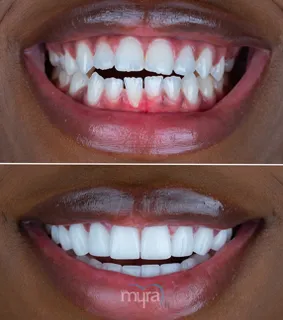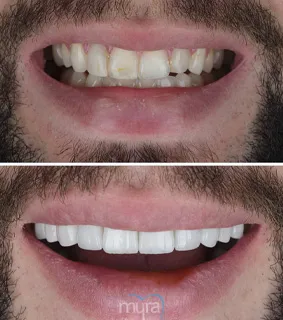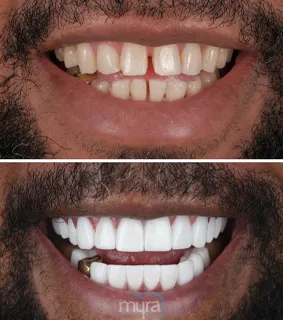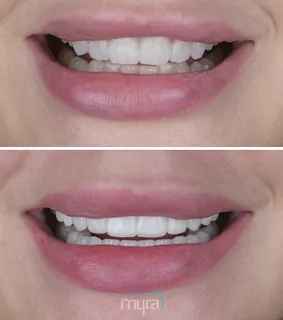Teeth Whitening brings a lot of benefits to its recipients. It is a proven safe approach towards achieving a radiant white smile. Some of these benefits indicate that Teeth Whitening is able to remove tooth discoloration, boost confidence, and promote healthier teeth. It additionally helps a person to look younger, remove germs, covers up imperfections, and helps an individual to smile more often. These benefits are going to be discussed clearly in the next passages. However, the benefits of white teeth are not a lifelong experience. There are several factors that help prolong and shorten the results of teeth whitening. It is best to seek a professional recommendation before engaging in any teeth whitening operations or treatments.
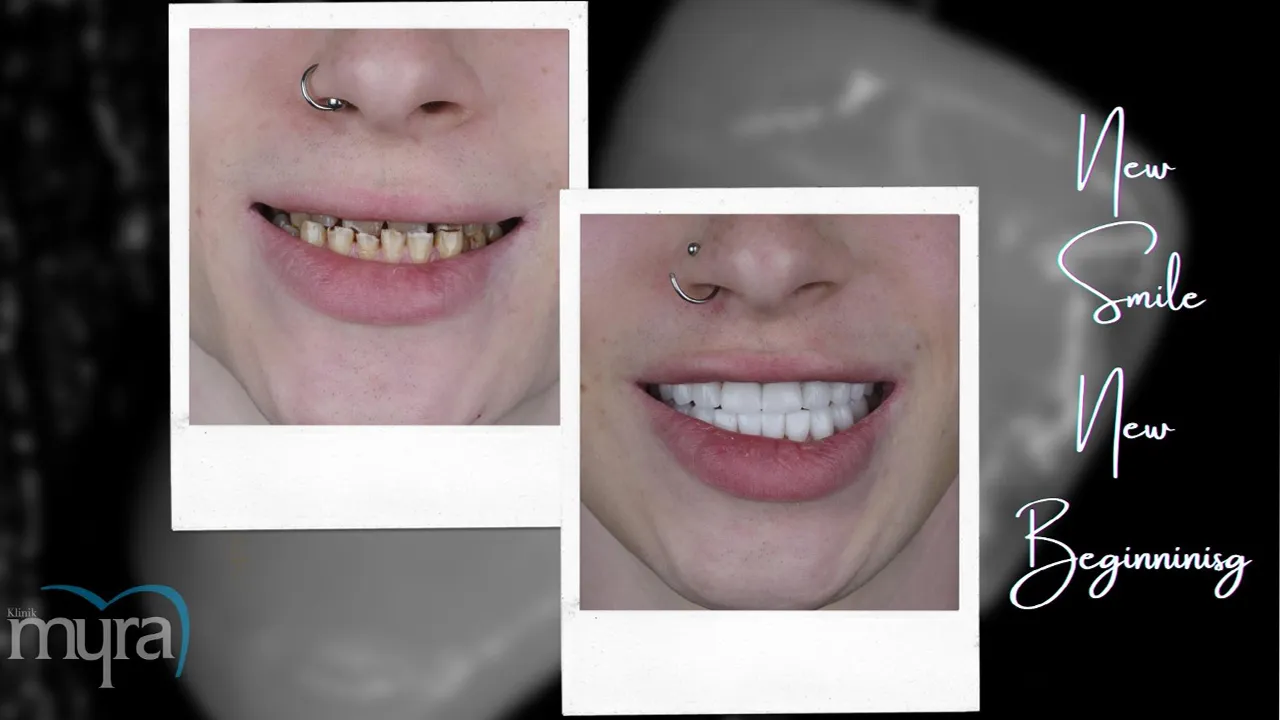
Listed below are the seven benefits of Teeth Whitening.
Teeth Whitening gets rid of Tooth Discoloration. Tooth staining is one of the oral issues that Teeth bleaching is able to eliminate. Teeth Whitening gives a person a whiter more appealing smile by removing stains and discoloration from the topmost layer of the teeth. It is essentially helpful for people who have yellowing or stained teeth as a result of hereditary, ageing, or lifestyle choices like smoking or excessive consumption of particular foods and beverages.
Teeth Whitening boosts confidence.Teeth Whitening is able to increase one’s self assurance as well. Having whiter and more radiant teeth enhances a person’s self esteem. People who go through Teeth Whitening become more at ease with how they appear.
Teeth Whitening promotes healthier teeth. Another benefit that Teeth Whitening brings is healthier teeth. Teeth bleaching is capable of removing surface stains brought on by food, drink, and cigarette use which eliminates the danger of bacteria build-up and tooth decay. Certain oral habits like regular brushing and flossing support the preservation of gum and tooth health as well.
Teeth Whitening helps a person appear younger. A person has the potential to look years younger with Teeth Whitening. The human teeth are fashioned to turn yellowish or become discoloured especially as a person ages. However, with whitened teeth, a person is able to counteract the visible impact of ageing.
Teeth Whitening helps remove germs. Eliminating oral germs is sometimes contributed from teeth bleaching. Deep seated bacterias in the mouth are removed as well, since teeth whitening is able to scrape off layers of teeth stain. However, maintaining oral hygiene by brushing and flossing on a regular basis is the first line of removing germs and bacterias from the mouth.
Teeth Whitening covers up imperfections. One of the advantages of Teeth Whitening is to conceal minimal oral flaws. Teeth bleaching offers essential assistance in hiding these minor issues in the teeth like tiny chips or fractures. However, it is crucial to think that teeth whitening does not serve as a substitute for restorative dental operations.
Teeth Whitening helps a person smile more often. Teeth bleaching encourages people to smile more frequently. A whiter and brighter teeth increases one’s confidence to smile. Furthermore, being satisfied with one’s look enhances a person’s propensity to smile and engage in social interactions.
1. Teeth Whitening gets rid of tooth discoloration.
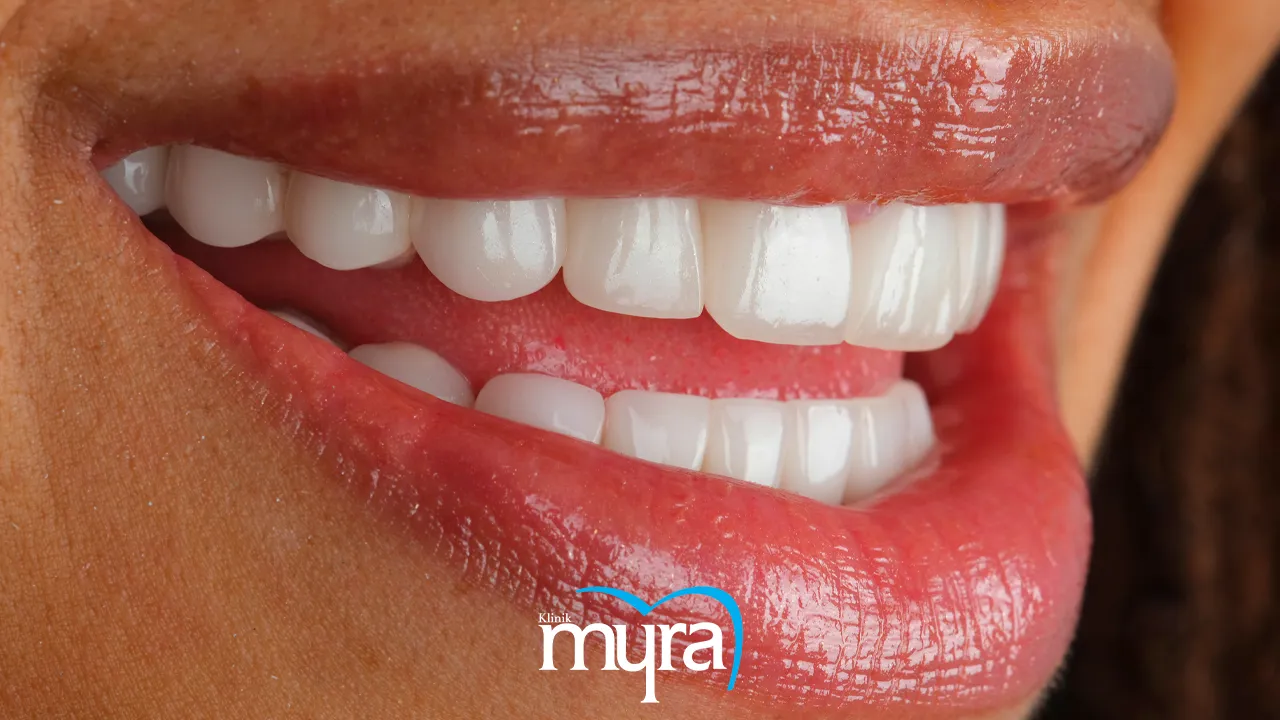
The most crucial advantage of Teeth Whitening is being able to eliminate tooth discoloration. Tooth discoloration is the phenomenon when the shade of the teeth alters. It is often caused by a number of elements such as intrinsic, extrinsic, and age-related factors. Teeth bleaching assists in eliminating stains and discolouration from the teeth's surface, giving the smile a radiant and more appealing appearance. The most prominent approach for teeth bleaching is In-office whitening. It is performed by using hydrogen peroxide or carbamide peroxide as an active element to scrape off the discoloured particles on one’s teeth. The In-office Teeth whitening process often necessitates a number of cycles over time to obtain the best outturn. However, it is completed swiftly under expert management of a licensed dentist. Dentists sometimes sell take-home teeth whitening packages that come with a personalised tray and a peroxide gel with a little concentration. The trays are put on for a specific length of time, typically 30 minutes to an hour, over several days or weeks. These kits can be used for touch-ups and maintenance and can be less expensive than in-office whitening. There are other alternatives for teeth bleaching that are less invasive and more affordable such as over-the-counter items for teeth whitening. These OTC items consist of whitening toothpastes, whitening strips, and whitening gels. Nevertheless, these products take longer to eliminate teeth staining and are usually less efficient than in-office or at-home whitening treatments.It is crucial to think that the type and intensity of the discolouration, as well as the technique employed, all affect the whitening's efficiency and endurance. Maintaining the outturn of teeth whitening is essential in keeping the teeth looking their best at the same time.
2. Teeth Whitening boosts confidence.
Another important benefit of Teeth whitening is enhanced confidence. Confidence is defined as the sense of confidence brought on by an awareness of one's own skills or traits. Teeth Whitening is able to boost one’s confidence by allowing them to project a radiant and clean smile. The ability to grin and the knowledge that one’s teeth are actually white change how confident a person feels. People are far more likely to relax and smile if they have brighter teeth which they are happy with. The idea floods the brain with feel-good chemicals even though the smile is a little forced. A bright white smile is often seen as a sign of good oral hygiene and overall health. It is an important factor in building confidence. People with whiter teeth tend to feel more confident about their appearance, which can lead to increased self-esteem and higher levels of social interaction. Additionally, people with yellow or discoloured teeth have the tendency of feeling embarrassed or ashamed when they smile, leading them to hide their teeth from view and avoid smiling altogether. Teeth whitening treatments are one way that these individuals regain the confidence they need in order to show off their pearly whites again without feeling uncomfortable or insecure about it.
Teeth Whitening effectively works by directly applying whitening chemicals like hydrogen peroxide. It is painted to each tooth's surface before being heated or illuminated by laser radiation (heat lamp). The procedure normally takes anywhere from 30 minutes to several hours, depending on how serious the staining is. Nevertheless, the outturns are typically seen after just one session. Moreover, having a radiant grin not only makes a person look fantastic but also boosts one’s confidence because it makes the mouth appear healthy. While there are potential hazards involved in utilising some bleaching agents, these treatments should be completely safe. Teeth Whitening is able to deliver fantastic long-term effects if carried out appropriately and with the help of qualified professionals.
3. Teeth Whitening promotes Healthier Teeth.

Another advantage of Teeth Whitening is to promote healthier teeth. It is one of the added benefits of teeth whitening aside from removing teeth stains. Having unhealthy teeth is often the reason for why more serious dental problems arise.A healthy tooth is normally characterised by a number of indications such as having pink gums, not loosened roots, neutral smelling breath, and doesn’t bleed when brushing or flossing. One of the most common causes of unhealthy teeth is food residue left on the teeth resulting in teeth stains. Teeth whitening aids in removing surface stains on teeth that are brought on by food, drink, smoking, and other things. These surface stains can build up on the teeth, giving them a yellow or discoloured appearance, over time. Teeth whitening can assist in restoring the natural whiteness of the teeth, making them appear whiter and healthier. Teeth whitening additionally assists to enhance the general health of the teeth, by encouraging improved oral care. Having a smile that is whiter and brighter is one of the most potent motivators for people to take better care of their teeth. People are anticipated to brush and floss more frequently and avoid gum disease and tooth decay when they are satisfied with the appearance of their teeth. Individuals who whiten their teeth are more likely to go to the dentist for routine examinations and cleanings, which can further boost dental health. Furthermore, teeth whitening aids in stopping future tooth discolouration as well. Teeth whitening prevents new stains from developing on the teeth by eliminating surface stains and encouraging improved oral hygiene. It helps to maintain the teeth's health and white appearance for a longer time.
However, teeth whitening is not suitable for everyone. People who have sensitive teeth, gum disease, or cavities must refrain from teeth whitening or consult with their dentist first. Additionally, teeth whitening may not be as effective for those who have intrinsic stains on their teeth, which are brought on by things like medicine or damage. Such situations might benefit more from other cosmetic dental procedures like bonding or veneers. It is crucial to remember that teeth whitening does not serve as a replacement for basic oral hygiene. A decent dental hygiene regimen must be kept up to attain healthier teeth. Good dental hygiene usually entails going to the dentist frequently and brushing and flossing at least twice a day. Dental patients must remember that teeth whitening is not sufficient enough to take the place of proper oral hygiene habits although it is a useful method for enhancing the appearance of a tooth.
4. Teeth Whitening helps a person appear Younger.
Teeth Whitening relatively helps an individual to look younger than his or her usual age. It is one of the secondary benefits of Teeth whitening, aside from eradicating tooth stain. Studies show that people with whiter teeth and radiant smiles undeniably appear younger to other people. Youth and vitality has become frequently correlated with a brilliant white smile. However, several activities that people do as they age causes the teeth’s colour to turn yellowish. These habits include diet preference, vices, and sometimes medications. Teeth Whitening is capable of assisting the mouth to restore a more youthful appearance to the teeth by scrubbing off the yellowish stains. Moreover, teeth that are yellow or discoloured are able to make someone look older than they are. People with discoloured teeth often give the impression that they don't care for them. It eventually connects to poor health habits brought on by ageing. Teeth whitening helps a person look younger and healthier, by removing the stains and discolorations in the teeth.
Additionally, having yellow or discoloured teeth is able to age a person's smile by making it look less appealing. A person might appear younger and more attractive by smiling brightly, which also helps to enhance one's entire appearance. A whiter teeth brings a positive psychological impact to a person. Additionally, teeth whitening aids in enhancing a person's self-esteem and confidence. People are expected to be more inclined to smile and flash their pearly whites, when they are satisfied with the appearance of their teeth. The inclination to smile more often having whiter teeth eventually make people seem more attractive and self-assured.They appear younger than their usual age as a result.
Nonetheless, one must keep in mind that teeth whitening is neither a replacement for proper oral care or a quick fix for looking younger. People with inherent stains, which are brought on by things like medication or damage, are anticipated to find teeth whitening not as effective for them unlike others. Additionally, there are instances when teeth whitening is not able to entirely erase the effects of age on the teeth. Supplemental cosmetic dental procedures like veneers or bonding are more viable to use in such cases. Dental patients or clients are advised to speak with a licensed dentist to find out if teeth whitening is right for them. It is one way of making sure as well that the procedure being preferred is secure and suitable for their teeth. Some people must steer clear of teeth whitening procedures or consult their dentist first if they have sensitive teeth, gum disease, or cavities.
5. Teeth Whitening helps remove germs.
Another essential advantage of Teeth Whitening is that it is capable of removing germs. Germs is defined as the microscopic bacteria, viruses, fungi, and protozoa causing illnesses and diseases. Germs and bacteria that are found in the mouth are the main cause of different oral issues. Teeth whiteners are capable of eradicating bacteria in the teeth and sweeping off tooth damage, aside from improving one's appearance and boosting one's self-esteem. The chemical composition of teeth whiteners particularly Hydrogen Peroxide is able to eliminate deep seated plaques and concealed germs in the teeth. It eventually lowers the chance of more bacteria build-up and future oral health problems. Teeth whitening is one of the key ways that aid in the removal of germs simply by removing plaque and tartar accumulation from the teeth. Bacteria make up both plaque and tartar, which can cause a number of oral health issues including gum disease and tooth decay. Teeth whitening helps to lower the risk of these oral health issues by reducing the bacteria buildup encouraging general oral hygiene. Dental patients or clients who wish to go through teeth whitening must decide in the earliest time possible to be able to detect the existence of hidden germs and eradicate them. Teeth Whitening additionally aids in the removal of germs, by making it simpler to thoroughly clean the teeth. It is quite challenging to identify where plaque and tartar are accumulating when the teeth are stained or discoloured, making it more difficult to efficiently clean the teeth. Teeth whitening makes it simpler to identify where plaque and tartar buildup is happening by removing these stains and discolorations. This makes it simpler to properly clean the teeth and lowers the chance of oral health issues.
Moreover, teeth whitening provides a huge help in improving one’s self-esteem and confidence, aside from getting rid of bacteria. People usually tend to feel more assured and self-assured by smiling brightly and attractively, whether in social and professional situations. It further enhances social interactions and enables people to present themselves more favourably during networking events, meetings, and job interviews. Nevertheless, it is significant to remember that teeth whitening requires upkeep in order to keep teeth from discolouring again and eventually collecting germs one more time. Maintaining the effects of teeth whitening requires routine dental exams and cleanings as well as basic oral hygiene habits like brushing and flossing.
6. Teeth Whitening covers up imperfections.
Another known benefit of Teeth Whitening is that it covers up imperfections on one’s tooth. Teeth whitening is capable of covering up tooth deformities such as cracks, chips, and imperfect alignment. Having radiant bright teeth and a beautiful white smile are capable of concealing tooth defects in the mouth. Small chips or fissures in the teeth are covered up with the bleaching technique, giving them a more appealing, uniform appearance. These flaws usually develop from accidents, tooth decay, or injuries that result in chips or cracks in the enamel layer that covers each tooth. The reasons for these flaws differ from person to person. People considerably lessen the visibility of tooth defects by using high-quality bleaching treatments made for professional use, whatever the origin of the deformity is. However, these whitening solutions must be those prescribed by dentists, to avoid risking further harm like discoloration from misuse. There are many other options available for treating minor chips and cracks in the teeth. However, choosing professional grade whitening services provided by licensed dentists is still the most secure choice available if a person wants to swiftly and safely hide any noticeable imperfections in their teeth. The teeth flaws brought on by age are concealed by teeth whitening as well. The enamel of a person's teeth may start to erode with age, exposing the tooth's yellow dentin underneath. The yellowing of the teeth can be concealed by teeth whitening, giving them a whiter, more youthful appearance.
It's crucial to remember that teeth whitening doesn't cover up flaws permanently and that regular care is necessary to keep teeth looking white. Teeth whitening is not a cure-all for dental flaws such as serious chipping, cracks, or misalignment. It is preferable to contact a dentist for an accurate evaluation and treatment, in such cases. Additionally, it's crucial to speak with a licensed dentist before using any at-home remedies for tooth deformities because certain solutions sometimes contain components that are too abrasive for some people's oral health.
7. Teeth Whitening helps a person smile more often.
Teeth Whitening undeniably encourages an individual to smile more often. It is one of the supplementary advantages of Teeth Whitening, apart from removing teeth stains. A glowing smile allows a person to have increased levels of self-esteem thus making it easier for them to smile more frequently. Most people with discoloured and unpleasant teeth appearance often opt to hide them and avoid smiling. It affects their self-confidence and inhibits them from enjoying life. Teeth whitening is known to transform the teeth’s natural colour and even make it brighter than usual. It is the safest and fastest way to achieve a beautiful smile which is generally non-invasive and more affordable than other dental solutions. Teeth whitening encourages people to smile more frequently by boosting their confidence and self-esteem. Teeth whitening encourages more smiling by making one feel more attractive as well. An attractive physical quality, a white, bright grin is frequently linked to good oral hygiene, youth, and health. A person feels more attractive and confident after having their teeth whitened, which may encourage them to smile more often. A stunning grin can enhance self-confidence, which can then result in a more upbeat and brighter attitude on life. It is frequently believed that a beautiful smile is a mirror of one's inner well-being and self-esteem. A person who feels good about their grin is more likely to share it with others, which makes them more approachable, helps them forge better bonds with others, and makes them happier in general.
Dental patients are advised to remember that teeth whitening requires upkeep in order to keep teeth from discolouring again. Maintaining the effects of teeth whitening requires routine dental exams and cleanings as well as basic oral hygiene habits like brushing and flossing.
What to know more about Teeth Whitening?
Teeth Whitening is basically the process of removing teeth stains and improving a person’s smile. The process of Teeth Whitening depends on the kind of Teeth whitening technique employed. Teeth are generally whitened by applying a chemical substance called Hydrogen Peroxide. It has been used as an efficient teeth whitener for several years already. It is known to be safe for teeth whitening with proper use and regulated application. Teeth Whitening involves two different approaches where patients are able to choose from. These whitening approaches are either an at-home or do-it-yourself whitening approach or a professional whitening treatment. At-home whitening solutions generally involve over-the-counter or OTC whitening merchandises such as whitening toothpastes, whitening strips, or premade whitening trays. A professional whitening solution on the contrary, such as In-Office Whitening operation is often performed inside a dental facility and executed by a licensed dentist. Teeth whitening under a professional procedure typically commences once the patient goes through a scheduled consultation with a licensed dentist. The licensed dentist prepares the materials and the patients themselves once the consultation is through and session has been decided. The whitening substance applied on the teeth oxidises the enamel and dentin of the teeth, making them appear whiter and more brilliant. The majority of therapies don't seem to harm tooth enamel in any significant way. However, some treatments are capable of altering the enamel, resulting in tooth sensitivity when the gel is applied to the teeth for an excessive amount of time.
There are a number of things to know before getting a Teeth Whitening whether it is an at-home solution or a professional operation. One of these things is that the whitening process removes surface stains. It is important to note that Teeth Whitening is capable of eliminating teeth stains that are present in the topmost layer of the teeth. Some dentists make use of a light or a laser to expedite the chemical reaction of the whitening substance in the teeth. However, the outcomes of using the solution to whiten the teeth depends on the initial appearance of the teeth. Patients who suffer fluorosis, tetracycline staining, or other dental issues have the least potential to see the spectacular improvements anticipated from in-office whitening methods. Another thing to know about Teeth Whitening is that , clean teeth whiten better. Teeth that are cleaned before teeth whitening have better chances of holding the whitening substances longer than those who are not. Teeth must be cleaned within two weeks utmost before the scheduled teeth whitening session. Dental patients are encouraged to prepare for the expected tooth sensitivity that they are going to experience after the whitening operation. Licensed dentists suggest that using a fluoride based toothpaste helps to minimise the post sensitivity incorporated in the operation. Dental patients who have oral issues such as tooth damage, cracks, and gum disease are prohibited to undergo Teeth whitening. The process of teeth whitening is capable of causing oral issues to escalate to a more severe rate.
It is additionally wise to know that Teeth Whitening is not capable of whitening tooth restorations or fillings. These tooth restorations include dental implants, implant based dentures and dental fillings. It is rather advised to undergo teeth whitening first before going through dental implant installations. Knowing that Teeth whitening lasts up to a year , is another important thing that a person must obtain before engaging into the whitening procedure. The natural colour of the teeth starts to emerge after that time. A dental patient is allowed to undergo subsequent whitening operations as long as it is not more than twice a month every year. Going through another bleaching procedure too soon causes the teeth to dry up and become too sensitive. It is smart to think for a person who wishes to experience teeth Whitening, that its cost varies on a case to case basis. Professional Whitening treatments costs higher compared to at-home whitening methods. It additionally depends upon the location where the operation is performed and the kind of procedure employed as well. Licensed dentists in larger cities are expected to charge higher service fees compared to those in small towns. Whitening operations which use intensive and high technological equipment are costly as well. Another thing to consider before going through a Teeth whitening operation is that it requires a change of diet plan. The duration of the outturn of Teeth whitening is influenced by the food and drink consumption of the patient. It is therefore necessary to avoid consumable products that are coloured such as coffee, tea, soda, wine, berries, or tomatoes within the first 48 hours after the whitening operation.
It is important to note as well that dental clients have the liberty to choose at-home whitening solutions as a quick fix over clinic-based ones. Whitening merchandise that are held available OTC generally contain lower concentrations of whitening elements which make them produce less effective results than In-Office treatments. However, it is quite helpful for those who want a quick fix and run a little lower than their budget. Clinic based whitening operations whitens in as high as eight shades already, at-home techniques are normally whiten one to shades on the other hand. Another thing that a person must know before starting a teeth whitening procedure is that using a whitening toothpaste helps in maintaining the whitening outturn of the whitening procedure. Using a whitening toothpaste and a whitening strip together is a good and immediate whitening solution as well.
What are the risks of Teeth Whitening?
Teeth Whitening is associated with a number of risks that one must be aware of as well. One of the most commonly known risks of Teeth whitening is Sensitivity. Tooth sensitivity happens when the tooth reacts quickly to even the smallest changes or signals in the mouth. It is typical for tooth sensitivity to begin during the teeth-whitening procedure and last for several days following the procedure. The pain of sensitive teeth is frequently described as a brief tingling. It takes place when the tooth's enamel layer thinning irritates the dental nerves that lie beneath it. The peroxide in teeth-whitening products has the ability to scrape stains off of teeth. The chemical component of Teeth whitening treatments cause significant harm to the enamel when misused. Teeth sensitivity is frequently felt when consuming hot and cold meals and beverages. It is likely to occur whether using a professional whitening system or using a personal at-home whitening regimen. Some dental patients prefer to use at-home whitening kits, but professional whitening techniques are much safer and produce whiter results that last longer. The professional in-office whitening treatment is recommended for patients who are already aware of their tooth sensitivity because it is closely supervised by dentists. A qualified dentist is able to manage the patients level of sensitivity and provide immediate sensitivity treatments. Another example of the potential risks of a bleaching procedure is Gingival Irritation. It is distinguished by an inflammatory response of the gingiva, or the gums surrounding the tooth, to an irritating chemical. The excessive usage of the peroxide concentration in the whitening substance frequently results in gingival discomfort. Over-the-counter whitening solutions like prefabricated whitening trays and whitening strips are among those that run the risk of being overused. The guidelines established by qualified dentists for the use of over-the-counter whitening solutions do not apply to people who use them. They have the choice to either use the product as directed or excessively, depending on their preferences. These people are more likely to have sensitive teeth and gingival irritability. Patients with no prior history of gum irritation or tooth sensitivity are permitted to utilise over-the-counter whitening solutions. However, once irritation sets in, patients are urged to consult a specialist.
Tooth Damage is another example of the cons of Teeth whitening. Tooth damage has a detrimental impact on a patient's dental health despite not being as well-known as tooth sensitivity and gum irritation. When dental tissue and minerals are lost, causing the teeth to decay, this is known as tooth damage. The use of dangerous chemicals in the mouth results in the loss of certain dental minerals. When used improperly and without proper management, whitening agents have the potential to harm teeth. In some cases, bleaching substances might get stuck in dental fissures or unfilled cavities and cause internal harm to the tooth. Over Whitening is additionally a noted risk from Teeth Whitening. Over-whitening is the practice of using whitening agents in excess to get whiter teeth right away. It is a risk that dental patients who use at-home whitening procedures or over-the-counter whitening products typically experience. Over Whitening actually has the reverse impact of what consumers want. Too much tooth whitening causes translucency. IThe teeth start to seem yellow in place of being white. When teeth are too whitened, they can turn blue or grey. Asking qualified dentists for professional guidance helps in avoiding over-whitening. Another visible risk of Teeth bleaching is acquiring burns and blisters. Burns and blisters are one of the least risks of Teeth Whitening. However, it is still expected to happen if whitening agents are used improperly or excessively. It usually takes place when the whitening agent is left on the teeth longer than is recommended. Burns and blisters are created inside the mouth as a result of the heat created by the chemical reaction of the whitening agents, which also produces heat. Whitening gels In some cases, are not used correctly resulting in mouth burns and blisters. People who experience blisters and burns following a teeth whitening procedure must rinse their mouths with cool water and apply topical anaesthetic cream to the affected areas. A visit to a qualified dentist is required once the discomfort persists.
Another known risk of Teeth bleaching is Allergic Reaction. An allergic reaction is a condition when a person's body reacts to something that, to most people, seems harmless. Itching, inflammation, and skin damage are frequently seen in allergic reactions. Some dental patients have an odd reaction to whitening medications. Dental patients who are experiencing allergic reactions frequently exhibit symptoms of hives, which include an itchy skin rash, breathing problems, and swelling of the cheeks, lips, and tongue. These adverse responses frequently result from whitening procedures carried out at home. When these circumstances arise, dental patients are urged to see a qualified dentist for a consultation. An Upset Stomach is a noted risk of Teeth bleaching as well. An upset stomach, often known as a stomach ache, is a severe sensation felt in the lower abdomen that is typically brought on by inflammation of the intestines and stomach lining. It is one of the rare hazards associated with teeth whitening, yet it can still have a negative impact on the patient's health. When a patient or dental consumer mistakenly swallows some of the whitening agent used in the whitening treatment, it causes an upset stomach. An upset Stomach frequently causes discomfort in the abdomen, vomiting, diarrhoea, headache, weariness, and chills. People who experience stomach discomfort during the teeth-whitening process are encouraged to drink plenty of liquids and eat bland foods to help flush the chemical out of their stomachs and eventually out of their bodies. Lastly, rough Teeth is associated with teeth bleaching as well. Rough teeth have the potential to worsen if not attended to right away. When the bleaching agent is applied to the teeth for a longer period of time than is recommended, rough teeth result. They frequently cause mouth discomfort, especially when speaking, eating, and drinking. The hydrogen peroxide in the teeth-whitening product etching action damages the enamel of the teeth, resulting in rough teeth. After the procedure, the teeth are claimed to begin to mineralize once more after 24 to 48 hours. It is forbidden for dental patients to consume anything with colour during the healing period.
These risks are quite inevitable for patients who go through Teeth bleaching. They are often caused by a number of factors that contribute to discomfort and soreness after a whitening solution. One of the causes of these risks include the misuse of whitening agents. Misuse of whitening solutions includes the excessive amount of concentration per usage and the unprescribed duration of the application. Almost all of the noted risks of Teeth Whitening are brought by the misuse of the bleaching agents. The whitening risks such as Tooth sensitivity, gingival irritation, tooth damage, burns and blisters, over whitening, and rough teeth are often caused by the high concentration of whitening solution and prolonged duration of its application to the teeth. Accidental swallowing of leaching agents causes some of the risks of teeth bleaching as well. Upset stomach, for example, is prompted by the unexpected ingestion of the whitening chemical. Utilisation of certain whiting merchandise from over-the-counter is another contributing element of these risks. Most OTC or over-the-counter products are acquired without a professional recommendation, which further results in various aftereffects such as allergic reaction. Inflammation of the gums, itchiness, rashes, and even swelling of the lips, tongue and face are the common symptoms of an allergic reaction. Application of whitening merchandise without a recommendation from a licensed dentist is oftentimes risky and detrimental to the patients oral condition. It is smart to opt for a professional consultation before engaging in any whitening solution, regardless of the approach that the patient prefers. The individual executing any profession whitening operations must be skilled and prominent in the area of teeth whitening as well. Dental patients and clients are able to expect quality and secured whitening results with a minimal occurrence of side effects if these two propositions are followed.
Teeth Whitening is capable of offering various oral health benefits, however it is also associated with a number of risks that dental patients are expected to encounter along the whitening journey.
The propositions mentioned above are some of the Risks of Teeth Whitening and the potential causes of these risks. It is important, therefore, to know the pros and cons of whitening teeth before participating in any Teeth bleaching activities. A thorough consultation with a licensed and skilled dentist is one of the best ways to experience minimal to no aftereffects of Teeth bleaching.
What are the Different Types Of Teeth Whitening Treatment?
Listed below are the different types of Teeth Whitening Treatments.
Whitening Toothpastes. Whitening Toothpaste is one of the most accessible kinds of teeth bleaching methods. Whitening Toothpastes are specially formulated toothpastes that are designed to specifically whiten teeth. Whitening Toothpastes contain Peroxide that softens, fractures, and dissolves stains on the topmost layer of the teeth. It also contains a substance called Blue Covarine, which creates an optical illusion that makes the teeth appear whiter. Special abrasives are also included in whitening toothpastes, which polish teeth gently. Whitening Toothpastes are made available over-the-counter and are purchasable without a doctor's prescription. Whitening toothpastes are effective against extrinsic stains. Extrinsic stains are tooth stains that have been seen accumulating in the early stages of teeth staining. However, stains that penetrate past the enamel layer of the teeth cannot be removed by whitening toothpastes. The consistency of applying Whitening Toothpastes must be repeated twice daily. whitening toothpastes start to show their effects, within two to six weeks of use. The difference of Whitening Toothpastes from other whitening techniques is that it is non-invasive, readily accessible and more affordable.
Whitening Strips. Another typical kind of Teeth bleaching solution is the Whitening Strip. Whitening strips are dental devices that help whiten teeth more quickly and affordably by dissolving tooth stains. It is a method of teeth whitening that is sold over the counter, or OTC, making it an immediate remedy for tooth discoloration and whitening. Whitening strips are effective for removing extrinsic stains that develop from consumption of certain foods and beverages, tobacco use, or poor oral care, similar to whitening toothpaste.
The majority of teeth-whitening strips need to be adhered to the tooth surface for about 30 minutes so that the chemicals are able to function. After the allotted time has passed, they must be removed from the teeth. It is not recommended to brush the teeth just before using the whitening strips. Bleaching strips must be applied to the teeth twice each day for two consecutive weeks to attain the desired effects. The difference between them is that whitening strips produce results faster than whitening toothpastes.
Premade Whitening Trays. Another common type of Teeth Whitening is the Whitening Tray. The entire top and lower arch of the teeth are covered with whitening trays, which resemble a sports mouthguard. The whitening gel inside the whitening trays is in charge of doing the cleaning and whitening work while it is still attached to the whole arch. There are two different kinds of whitening trays available. Premade Whitening Trays are one of them. Premade whitening trays are one sort of whitening tray whose design is based on a standard model, as implied by their name. It is designed for universal use in terms of size, form, and structure. These sorts of trays can be purchased at drug stores since they are sold over the counter (OTC). The difference that Premade whitening Trays hold compared to other teeth bleaching products is the design and the process of administering them to the teeth. Premade whitening Trays are not painted or laid above the teeth, but are worn to the full arch of the teeth instead.
Custom Made Whitening Trays. Another type of Whitening Trays is the Custom made whitening Trays. Dental customers prefer custom-made whitening trays over those that are already built since they fit the entire arch well and are more comfortable to use. They are more efficient than manufactured whitening trays because they offer a secure and tight fit. Custom made whitening trays are implanted inside a dental office by a qualified dentist, unlike whitening strips or toothpastes. The patient's personalised whitening tray is made by the dentist using a moulded pattern. It is applied to the entire upper and lower arch of teeth for around 4 hours each day over the course of two weeks, after the whitening tray has been made. The whitening benefits of the whitening trays become apparent after the allotted amount of time.
In-Office Whitening. In-Office Whitening Operations is another method of Teeth whitening. HOwever, unlike over-the-counter whitening products that are applicable at home, the In-Office technique is performed inside a dental facility. The procedure is commonly known as "Chairside bleaching" because it is performed while the patient lies back on a chair bed. It is typically carried out with the highest safety and regular supervision, since it is directly performed by a trained dentist and occurs inside a dental office. It has been shown to be safer to undergo an in-office whitening procedure than to use OTC products because the dentist controls how the whitening agents are applied. The in-office whitening method additionally delivers quick, visible results without sacrificing safety. Its procedure usually lasts from thirty minutes to one hour.
The results of the in-office teeth whitening procedure are immediately apparent after the procedure where most patients already have teeth that are two to eight shades whiter.
A whiter teeth is achieved through a number of procedures and solutions that differ in efficacy, longevity and costs. The prepositions mentioned above are some of the Types Of Teeth Whitening Options that people are able to utilise according to their personal preferences. The results however, depend on how the treatment is done, applied and maintained.
What are the home remedies for teeth whitening?
Listed below are some of the home remedies for Teeth Whitening.
Oil Pulling. Oil Pulling is one of the activities that a person is able to do at home to reduce the appearance of tooth stains. It is an age-old Indian folk cure known to whiten teeth, improve oral health, and refresh breath. The method involves swishing oil around in the mouth to get rid of bacteria that can cause plaque and yellowing of your teeth. Coconut oil is a popular option because of its pleasant flavour and numerous health advantages. It usually contains Lauric acid, which is known for its capacity to lessen inflammation and destroy bacteria. Oil pulling helps with a variety of conditions, such as foul breath, tooth rot, and gingivitis. It is additionally useful in lowering oral bacterial populations, particularly Streptococcus mutans, which is known to be a tooth decay-causing organism, according to studies. The process of Oil Pulling is performed by simply placing a tablespoon of oil in the mouth and swishing it around for 20 minutes. It is crucial to use food-grade oil of the highest quality and to avoid swallowing any of the oil while performing the procedure because it can contain toxins that have been drawn out from the mouth. The oil must be rinsed off the mouth with water and spit the oil into a trash can (not a sink or toilet, as the oil could harden and clog pipes), after 20 minutes. Dental clients are advised to brush their teeth after Oil Pulling. Nevertheless, A dentist must be consulted before beginning any new oral health regimen. Oil pulling must not be used in place of conventional oral hygiene techniques like brushing and flossing.
Brushing with Baking Soda. Another helpful home solution for Teeth Whitening is with the use of baking soda. Baking Soda, sometimes referred to as sodium bicarbonate, contains natural whitening abilities that are able to remove plaque and surface stains from the teeth. These whitening components build an alkaline surrounding in the mouth inhibiting the growth of microorganisms. Brushing with baking Soda does not produce immediate results, however, one is able to notice visible whitening effects over time. Removing tooth stains using a solution of baking soda and water is done with little to no discomfort, even on sensitive teeth. Brushing with baking soda starts by simply mixing one teaspoon of baking soda with a little bit of water until a paste forms, brush your teeth in circular motions with the paste, and then thoroughly rinse. Brushing must be done gently because baking soda is sometimes abrasive and is able to harm tooth enamel if used excessively or violently. It is also essential to understand that maintaining oral health requires more than just brushing with baking soda. It ought to be used along with routine dental checkups, good oral hygiene habits including brushing and flossing, and a balanced diet.
Brushing with Baking Soda and Hydrogen Peroxide. Brushing with baking soda and hydrogen peroxide is a beneficial whitening solution that is achievable at home as well. Hydrogen peroxide and baking soda are combined to create a paste that is used like a toothpaste. Using hydrogen peroxide and baking soda together is known to be more effective than using either agent separately, when it comes to eliminating stains and lightening teeth. The mixture solidifies into a paste that stays on the teeth, as a person washes the teeth. The paste must be rinsed well with water after brushing thoroughly ,then the procedure is repeated frequently on a daily basis. Dental clients are advised to incorporate the proper amount of treatment because too much might irritate the gums and cause tooth sensitivity. A maximum concentration of 3% hydrogen peroxide solution is advised. Additionally, it's important to know that the American Dental Association (ADA) opposes the use of hydrogen peroxide as a teeth-whitening agent as it is able to cause serious oral issues in the long run. Consequently, it's crucial to employ the technique appropriately and sparingly.
Eating fruits and vegetables. Eating Fruits and vegetables is one of the home remedies that a person is able to do to whiten their teeth. People are unconfined to prefer fruits and vegetables as a whitening solution rather than chemical based bleaching treatments. Vitamins and minerals found in several fruits and vegetables can help to strengthen and whiten one’s teeth. Strawberries are among the best foods for whitening teeth. It contains Malic acid which is a natural astringent that can aid in removing surface stains from the teeth. Strawberries are utilised as a whitening solution by simply mashing them up, spreading the concoction on the teeth, and then brushing as usual. Another example of fruit that is able to whiten the teeth is oranges. Oranges contain vitamin C that aids in the removal of dental plaque and stains. Orange peels are known to whiten teeth as well. The inner part of the orange peels are massaged on the teeth for two minutes before one’s usual brushing. Some other examples of fruits that help whiten the teeth are watermelons, pineapples, and papayas. Vegetables are good home remedies for teeth whitening as well. Some of the vegetables that are able to cleanse and whiten the teeth include cucumbers, celery, and carrots. They help in brushing one's teeth clean because of their high water content. Consuming these vegetables raw aids in producing more saliva, which helps to reduce plaque buildup and balance oral acidity. Dental patients are advised to remember that while these treatments aid in enhancing the appearance of the teeth, they do not serve as a replacement for routine dental care. The best ways to preserve the health and beauty of your teeth are to brush and floss them twice a day, as well as to schedule routine checkups and cleanings with a licensed dentist.
Preventing tooth stains before they happen. One of the most basic home solutions to whiten teeth is by preventing tooth stains before they actually happen. A person is able to avert too many stains from sticking into the teeth by regulating them in the first place. Tooth stains primarily occur because of food and beverage intake that brings colour to the teeth. One of the ways of preventing tooth stains is by limiting the intake of food and beverages that are able to stain the teeth. Some of the foods and beverages that need to be consumed on a regulated basis are coffee, red wine, soda, berries, and tea. It is advised to brush one's teeth 60 minutes after consuming these kinds of foods and beverages. Another way of preventing tooth stain is through regulation of sugar intake. The main kind of bacterium that causes plaque and gingivitis called Streptococcus mutans, grows when a diet is heavy in sugar. It is advised that after eating something sweet, the teeth are washed right away. Getting plenty of calcium in one’s diet is another way of preventing tooth stains before they occur. Some tooth discolouration is brought on by enamel erosion, which reveals the yellow dentin underneath. Preserving the brilliance of one's teeth helps to build the enamel in return. Foods that are high in calcium, such as broccoli, cheese, and milk, help prevent tooth enamel erosion. It is important to remember that eating a diet high in calcium is not the sole way to keep strong teeth. Maintaining a balanced diet is as important as reducing the intake of acidic and sugary foods and beverages. Acidic and sugary foods erode tooth enamel and lead to decay. Additionally, it's crucial to keep one’s mouth healthy by brushing, flossing, and going to the dentist for regular checkups and cleanings.
Regular brushing and Flossing. Regular brushing and flossing is the cheapest and most basic way of preventing tooth stains. Tooth discoloration is primarily caused by plaque build up. Regular brushing and flossing helps keep one’s teeth white by eliminating oral bacteria and minimising plaque development. Teeth stains are gently removed by toothpaste, and plaque-causing germs are eliminated by flossing. It is advised to brush one’s teeth at least twice daily, before going to bed and in the morning. A toothbrush with soft bristles and fluoride toothpaste when brushing one’s teeth is ideal to use. The tooth enamel is strengthened by the mineral fluoride, making it more resistant to decay and discoloration. The brushing motion is advised to be done in circular and back-and-forth movement for at least two minutes each time to eliminate plaque and food particles. Additionally, flossing is crucial because it removes plaque and food particles from in-between teeth, where toothbrush bristles are unable to. It is advised to floss once every day, ideally just before going to sleep. A fresh piece of floss must be used for every tooth and must be moved gently down the gumline and between the teeth.
It's also crucial to keep in mind that daily brushing and flossing is not sufficient to prevent tooth stains. Avoiding meals and beverages like coffee, tea, and red wine, as well as planning frequent dental checkups and cleanings are important oral measures as well. The teeth can remain white and clean with regular dental cleanings as well.
The dentist is able to examine the patient and look for any indications of tooth decay or gum disease. The teeth are cleaned to eliminate any plaque or tartar buildup that has developed.
Teeth Whitening is achieved through various methods that people are able to select according to their preferences. Most people are convinced with the efficacy of chemical based whitening treatments or self-teeth whitening kits while others prefer natural approaches to self teeth whitening. The prepositions mentioned above are some of the home remedies on How to Whiten Your Teeth Naturally at Home.
Is teeth whitening effective for everyone?
No, Teeth Whitening is not effective for everyone. Some people are not suitable to go through Teeth Whitening for a number of reasons. Dental patients who are not advised to undergo Teeth bleaching are as follows, ladies who are pregnant or nursing, those who have dental fillings, implants, crowns, or dental bridges, children who are under 16 years old, those who have exposed roots, cavities, and periodontal disease, individuals who are sensitive to bleaching chemicals, those who have sensitive teeth, and those who demand unreasonable or stark-white outcomes. The state of the teeth and gums have an impact on how successful teeth bleaching is. It is critical to take care of any dental issues prior to having your teeth whitened. It's best to maintain good dental wellness before deciding to whiten the teeth because teeth whitening treatments create sensitivity or irritation to teeth that are already impaired. Additionally, those with dental restorations including fillings, crowns, and veneers have less potential to see good outturn from teeth whitening. These restorations do not lighten as quickly as natural teeth do, and lightening procedures result in an uneven hue that is often unpleasant. Furthermore, the kind of discoloration is one element that is able to influence how well teeth bleaching works. Products for whitening teeth operate by dissolving surface stains and they work best on stains brought on by food and drink like coffee, tea, and red wine. However, teeth bleaching is not as successful if the discolouration is brought on by internal causes like heredity or specific drugs. Teeth whitening is sometimes uneasy or painful for those with sensitive teeth or gums, which reduce its efficacy. These people often require desensitising toothpaste or whitening gel with a lesser strength. It is important to remember that teeth bleaching is a temporary fix. Depending on the technique employed and the person's living choices, the benefits of teeth whitening are able to persist for several months to a year. One needs to repeat the whitening procedure or use touch-up products to keep the teeth looking white.
Does teeth whitening improve the health of teeth?
Yes, Teeth Whitening improves the health of teeth in a number of ways. One of the ways that Teeth Whitening promotes healthy teeth is by getting rid of surface stains. Teeth Whitening makes it simpler to clean teeth and get rid of plaque and germs that cause gum disease and tooth decay. Additionally, some bleaching treatments like hydrogen peroxide assist to lessen the amount of germs in the mouth, which helps to lessen the risk of gum disease and tooth decay.
However, brushing and flossing are still essential components of excellent oral health and cannot be replaced by teeth whitening. Patients frequently adopt better oral hygiene practices by brushing, flossing, and rinsing more frequently after witnessing the spectacular results of teeth whitening, which helps to maintain the health of one’s teeth. Additionally, it's crucial to consult a licensed dentist before having the process done because not everyone benefits from tooth whitening. Dental patients are advised that improperly performed whitening procedures have side effects. Over-the-counter medications are not as effective as professional therapies and are able to irritate or induce sensitivities. Some types of discolouration, such as tetracycline stains, fluorosis, etc.have the potential to not respond properly to whitening procedures as well. Dentists usually employ veneers or bonding instead in such cases.






